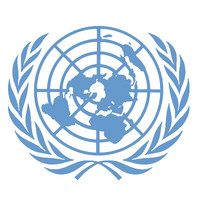L'importanza dell'articolo 26
Sarà la volta buona che...?
 Ricevo da Alyn Ware, coordinatore del PNND (l'organizzazione mondiale dei parlamentari per il disarmo e la non proliferazione nucleare) un interessante inoltro. Si tratta della notizia dell'imminente avvio di un dibattito in seno al Consiglio di Sicurezza delle Nazioni Unite, “strengthening collective security and armament regulation”, che di fatto potrebbe riproporre ai propri membri l'applicazione dell'articolo 26 della Carta, cui compete la regolamentazione di uno sviluppo e disarmo sostenibili ("Sustainable disarmament and sustainable development").
Ricevo da Alyn Ware, coordinatore del PNND (l'organizzazione mondiale dei parlamentari per il disarmo e la non proliferazione nucleare) un interessante inoltro. Si tratta della notizia dell'imminente avvio di un dibattito in seno al Consiglio di Sicurezza delle Nazioni Unite, “strengthening collective security and armament regulation”, che di fatto potrebbe riproporre ai propri membri l'applicazione dell'articolo 26 della Carta, cui compete la regolamentazione di uno sviluppo e disarmo sostenibili ("Sustainable disarmament and sustainable development").
Certamente le intenzioni dei promotori dell'ONU, nata nel 1945 durante la terribile esperienza di una guerra mondiale ancora da concludere, entravano in una logica allora preponderante e necessaria; dove la tragicità degli eventi bellici rendeva obbligatorio porre delle regole che fossero recepite da tutte le Nazioni, per evitare il ripetersi di nuovi conflitti che avrebbero messo in serio pericolo l'esistenza stessa dell'umanità.
L'articolo 26, appunto. Dove veniva chiesto alle Nazioni non solo un dibattito ma un impegno serio e collaborativo per la limitazione degli armamenti e la prevenzione di futuri conflitti. E quindi una riduzione delle spese militari che avesse come conseguenza un cresciuto impegno per lo sviluppo.
Ma come tutto il mondo ha notato... l'articolo 26 è stato sempre disatteso! Vorrei sperare che i lavori del Consiglio di Sicurezza, che si apriranno il prossimo 19 novembre, possano rimettere in gioco l'applicazione di queste "linee guida".
Non mi illudo che ciò si realizzi per motivi umanitari o di principio etico o giuridico internazionale. Però... com'è vero che stiamo vivendo in tempi particolari, in cui tutto sembra debba essere messo in discussione, vertici dell'economia ed equilibri politici... e lo stesso dominio degli States probabilmente si trasformerà... il mio spirito di realistico utopista non demorde! E chissà che a furia di crisi mondiali e batoste finanziarie, il nostro cocciuto Occidente non possa alla fine ritrovare nuovi equilibri e nuove alleanze, e magari chissà, forme di collaborazione per il bene comune, ad un certo punto indispensabili mezzi per la sopravvivenza di noi tutti umani, ospiti spesso indelicati e arroganti di questo nostro piccolo pianeta.
Articoli correlati
 Una Legge di Bilancio sempre più armata
Una Legge di Bilancio sempre più armataCresce la spesa militare italiana e avanza il progetto GCAP del caccia di sesta generazione
E' in atto una corsa tecnologica, presentata come un investimento per la “difesa del futuro”, che rischia di impegnare risorse economiche enormi per i prossimi decenni, sottraendole allo stato sociale e alle urgenze ambientali. Vediamo cosa avranno di fronte i parlamentari italiani.31 ottobre 2025 - Redazione PeaceLink Occorre far convergere il movimento dei lavoratori, quello contro il riarmo e quello per l’ambiente
Occorre far convergere il movimento dei lavoratori, quello contro il riarmo e quello per l’ambienteStop al riarmo, sì alla salute, al lavoro e alla giustizia ambientale
Il Coordinamento No Riarmo esprime il proprio pieno sostegno ai cittadini e alle cittadine di Taranto e Genova, che si stanno mobilitando per la difesa della salute, dell’ambiente e della dignità del lavoro, contro decenni di inquinamento industriale.23 luglio 2025 - Coordinamento No Riarmo Basta riarmo, è il preludio ad una guerra.
Basta riarmo, è il preludio ad una guerra.Il 21 giugno, una grande manifestazione a Roma contro il riarmo – anzi, forse due.
Dal 24 al 26 giugno 2025 si terrà a L’Aia il prossimo vertice NATO che punta sul rafforzamento bellico dell’Alleanza, mentre il 21 giugno, alla vigilia, si terranno due contromanifestazioni, una a L’Aia, sede del vertice, l’altra in solidarietà a Roma29 maggio 2025 - Patrick Boylan PeaceLink aderisce alla mobilitazione
PeaceLink aderisce alla mobilitazioneNo alla prima fabbrica di armi per ReArm Europe
Appello lanciato dalla rete "Mamme da Nord a Sud". In Lazio l’impianto “ex Winchester” di Anagni produrrà esplosivi7 aprile 2025
Sociale.network